Ecological dynamics
This boreal site is on upland linear to convex plain and hill slopes. Local site factors, including soil characteristics and disturbances create three vegetative communities. The reference plant community is a mixed birch and white spruce forest. It is unlikely that this site experiences long periods without disturbance which would otherwise support a white spruce forest.
Fires are a documented disturbance on this site. Fire frequency and intensity are unknown for this site. It is suspected that fires transform the reference plant community to an open meadow, before transitioning to a shrubland and finally returning to a forest.. Fires are typically suppressed around human settlements, so this disturbance is more common in remote areas.
Windthrow occurs on this site. It opens up the canopy, creating open pockets in the forest where understory competition flourishes. These areas support a dense mix of herbaceous and shrub species until once again becoming overshadowed by trees. Willows are browsed by moose. This does not appear to affect the ecological processes of the site.
Two human-created alternative states are present on this site. The first alternate state is in cleared areas in and around villages and towns experience a shift in the plant community. These areas may have been cleared for previous agricultural or cultural purposes, but are no longer managed. It is suspected that disturbances to the soil and existing seedbank create a unique post-disturbance phase. This evolves into a deciduous forest with lower abundances of vascular and non-vascular plants in the understory. A second alternate state is the result of forestry activities. Harvesting of trees for building material and fires results in different plant communities.
The information in this Ecological Dynamics section, including the state-and-transition model (STM), was developed based on current field data, professional experience, and a review of the scientific literature. As a result, all possible scenarios or plant species may not be included. Key indicator plant species, disturbances, and ecological processes are described to inform land management decisions.
State 1
Reference State
The reference state supports three community phases that are distinguished by the developed structure and dominance of the vegetation and by their ecological function and stability. The reference community phase is an open mixed forest that has an understory of various shrubs, forbs, and bluejoint. The presence of each community phase is dictated temporally by windthrow or fire.
This report provides baseline inventory data for the vegetation in the ecological site. Future data collection is needed to provide further information about existing plant communities and the disturbance regimes that result in transitions from one community to another. Common and scientific names are from the USDA PLANTS database. Community phases are characterized by the Alaska Vegetation Classification System (Viereck et al., 1992).
Community 1.1
Paper birch-white spruce/spirea-strawberryleaf raspberry/spreading woodfern
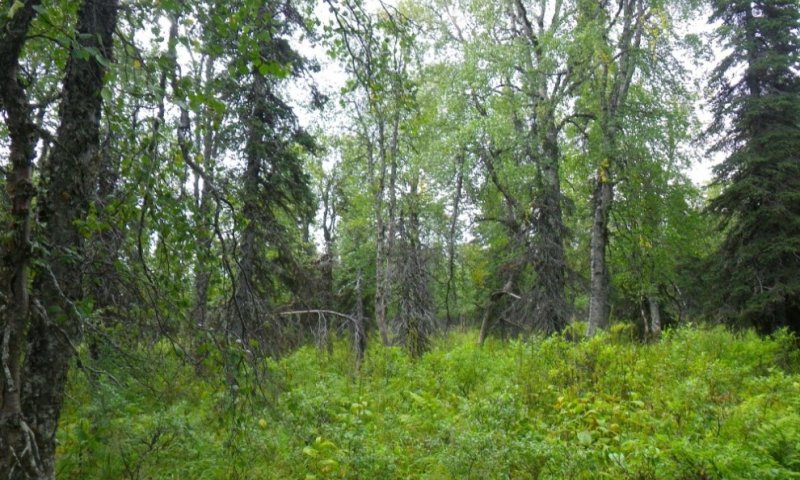
Figure 7. Dense understory typically is in the open forest of the reference plant community.
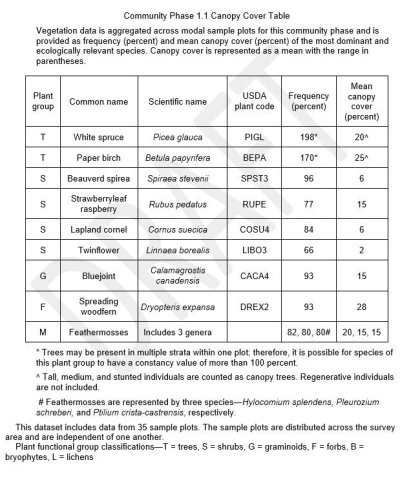
Figure 8. Frequency of species and canopy cover in community 1.1.
The reference plant community is an open mixed forest (Viereck et al., 1992) that has a diverse understory of shrubs, forbs, and bluejoint (Calamagrostis canadensis). Trees are in all four height strata, including stunted trees less than 15 feet high to tall trees more than 40 feet high. Typically, the overstory is paper birch and white spruce and the understory is medium to dwarf shrubs, including spirea (Spiraea stevenii), strawberryleaf raspberry (Rubus pedatus), Lapland cornel (Cornus suecica), and blueberries (Vaccinium ovalifolium, V. uliginosum). Forbs, such as spreading woodfern (Dryopteris expansa) and horsetails (Equisetum spp.), and bluejoint are common. A wide variety of other shrubs and forbs may be present, including fireweed (Chamerion angustifolium), sidebells wintergreen (Orthilia secunda), arctic starflower (Trientalis europaea), and twinflower (Linnaea borealis). Mosses generally make up a large percentage of the ground cover. The most prevalent are feathermosses (Hylocomium splendens, Pleurozium schreberi, and Ptilium crista-castrensis). Other ground cover commonly includes herbaceous litter and woody litter.
Community 1.2
Sitka alder/spreading woodfern/bluejoint
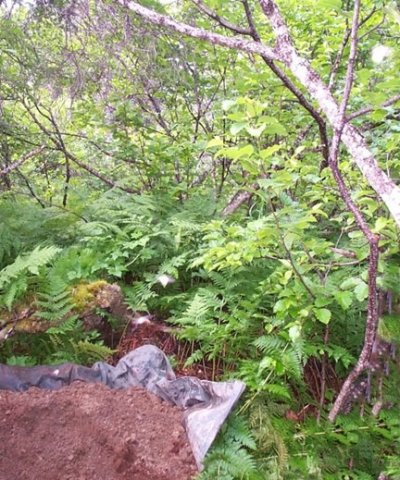
Figure 9. Typical area of community 1.2.

Figure 10. Frequency of species and canopy cover in community 1.1.
Community phase 1.2 is characterized as closed tall scrub (Viereck et al. 1992). It consists of dense Sitka alder (Alnus viridis ssp. sinuata), spreading woodfern, and bluejoint. Other species include arctic starflower (Trientalis europaea), spirea, and a low abundance of myriad low and dwarf shrubs. The ground cover commonly includes herbaceous litter and woody litter.
Community 1.3
Herbaceous meadow
The post-fire community is likely an herbaceous meadow. Open areas are dominated by fast growing, disturbance loving forbs and graminoids. Extant shrub species are likely present. Community composition at any given site is dependent on factors such as fire intensity, survival of extant species, seed bank, post-fire soil conditions and propagule pressure.
This post-fire community was not encountered during NRCS survey work. This description is based on available research and personal knowledge. Further surveying is required to fully describe this community.
Pathway 1.1a
Community 1.1 to 1.2
Paper birch-white spruce/spirea-strawberryleaf raspberry/spreading woodfern
Sitka alder/spreading woodfern/bluejoint
Tall deciduous and coniferous trees may be susceptible to windthrow during periods of high winds. This can create nonvegetated areas in which fast-growing, pioneer plants may become established. The period needed for this transition is unknown. It depends on a variety of factors, including tree height, rooting depth, and windspeed.
Pathway 1.1b
Community 1.1 to 1.3
Fire removes overstory species and partially or fully removes understory species. Any organic horizon is likely to be partially or completely removed. Soil and site conditions are ideal for extant shrubs and fast growing, disturbance-loving herbaceous species.
Pathway 1.2a
Community 1.2 to 1.1
Sitka alder/spreading woodfern/bluejoint
Paper birch-white spruce/spirea-strawberryleaf raspberry/spreading woodfern
Over time, deciduous and coniferous trees may colonize and eventually become dominant in the overstory. Alders may be shaded out, which allows a species-rich understory to become established. The period needed for this transition is unknown. It likely is influenced by propagule pressure and encroachment by nearby trees.
Pathway 1.3a
Community 1.3 to 1.2
The post-fire community develops into a shrubland. The weakly developed soil supports alder in the overstory. The understory is comprised of shade-tolerant species that benefit from the nitrogen fixing-properties of alder.
State 2
Cultural/Agronomic State
This alternate state results from cultural or agronomic activities. Practices such as clearcutting can result in massive soil disturbance that in turn can produce an early community phase. As this community phase progresses, it typically produces a forest community dissimilar to community 1.1. This forest can support some species extant in the reference community phase, but it includes little, if any, white spruce (Picea glauca), has a lower abundance of shrubs, forbs, and graminoids, and has much less moss cover.
Continued anthropogenic activity typically prevents the forest from returning to the reference state. It is unknown whether community phase 2.1 will naturally shift back to the reference plant community if it can naturally progress with no further anthropogenic interference.
Community 2.1
Paper birch/highbush cranberry/bluejoint

Figure 11. Typical area of community 2.1.
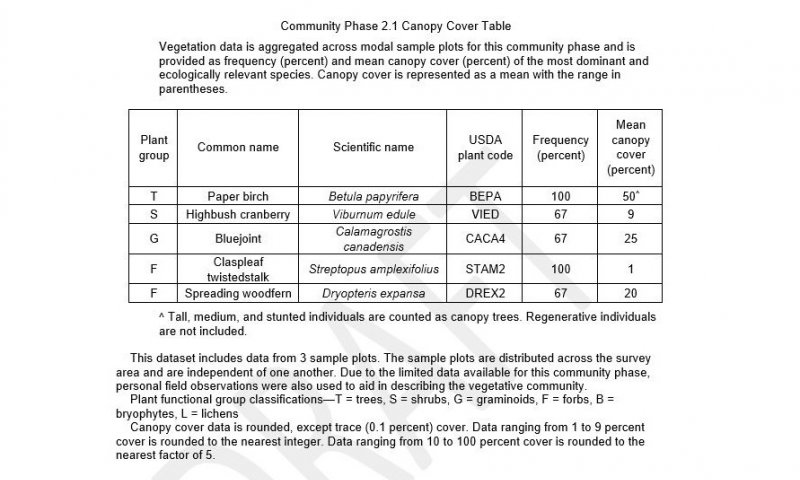
Figure 12. Frequency of species and canopy cover in community 2.1.
This late cultural/agronomic community phase is characterized by an open broadleaf forest (Viereck et al., 1992) that has an open, diverse understory of shrubs, graminoids, and forbs. Typically, the overstory is paper birch (Betula papyrifera) and the understory is highbush cranberry (Viburnum edule), bluejoint, spreading woodfern, and claspleaf twistedstalk (Streptopus amplexifolius). A variety of less common, less abundant forbs and shrubs typically are present, including twinflower (Linnea borealis), Lapland cornel, field horsetail (Equisetum arvense), woolly geranium (Geranium erianthum), and fireweed. A small amount of mosses typically are in this community, but lichens generally are not. Other ground cover commonly includes herbaceous and woody litter.
Forest overstory. Paper birch is the dominant and single tree species in this community.
Community 2.2
Sitka alder/spreading woodfern
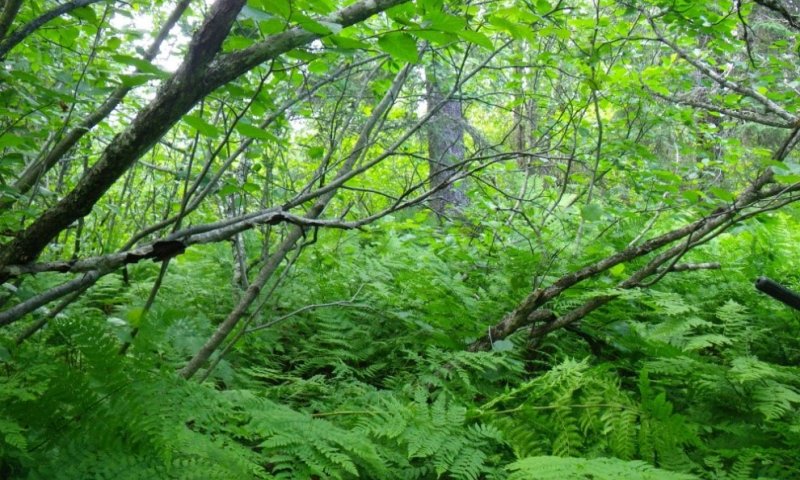
Figure 13. Typical area of community 2.2.
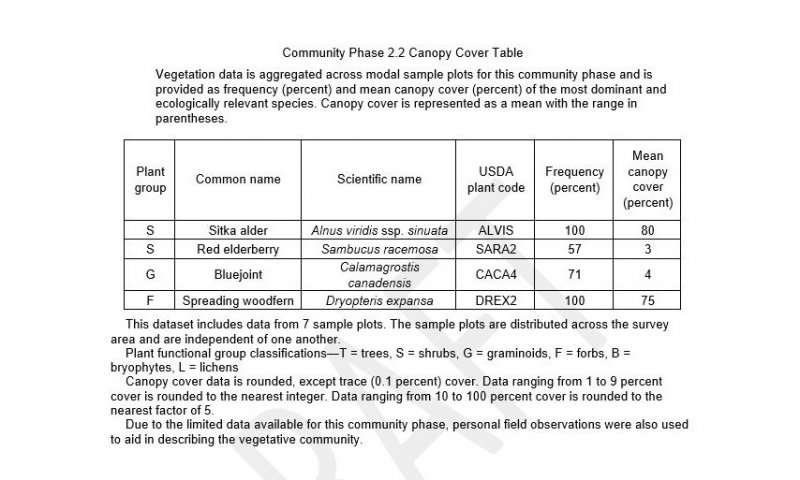
Figure 14. Frequency of species and canopy cover in community 2.2.
This early cultural/agronomic community phase is characterized as closed tall scrub (Vierek et al., 1992). It consists of dense scrubland that has limited species in the understory. Typically, the overstory is tall Sitka alder (Alnus viridis ssp. sinuata) and patches of red elderberry (Sambucus racemosa) and the understory is spreading woodfern and bluejoint. Other species in the understory include woodland horsetail (Equisetum sylvaticum), claspleaf twisted stalk, and arctic starflower. Mosses commonly are a minor component in the community. The ground cover typically consists of herbaceous and woody litter.
Pathway 2.2A
Community 2.2 to 2.1
Sitka alder/spreading woodfern
Paper birch/highbush cranberry/bluejoint
Time and growth without human interference or natural disturbance.
If this community is not disturbed, birch (Betula spp.) trees may colonize, creating a shaded understory and a declining alder population. This may allow for colonization by various understory shrubs, graminoids, and forbs. The period needed for this pathway is unknown. It likely is partially determined by the rates of colonization and growth of birch trees.
State 3
Forestry State
This alternate state results from forestry practices, such as tree thinning and firewood harvesting, near and in the villages and towns. De-limbing and selective felling of white spruce and birch trees can open the understory to space and light without the major soil disturbance associated with windthrow. Forbs and graminoids can thrive and produce an early community phase different from that of the reference state. As trees eventually reclaim the canopy, a forest that is similar in the richness of species but different in the abundance as compared to the reference community typically becomes established.
Continued harvesting of trees generally prevents the forest from returning to the reference state. If community phase 3.1 is allowed to naturally progress, the forest canopy will close further and the understory shrubs, graminoids, and forbs will increase in richness and abundance. This will shift the community toward the reference state.
Community 3.1
White spruce-paper birch/spirea/spreading woodfern
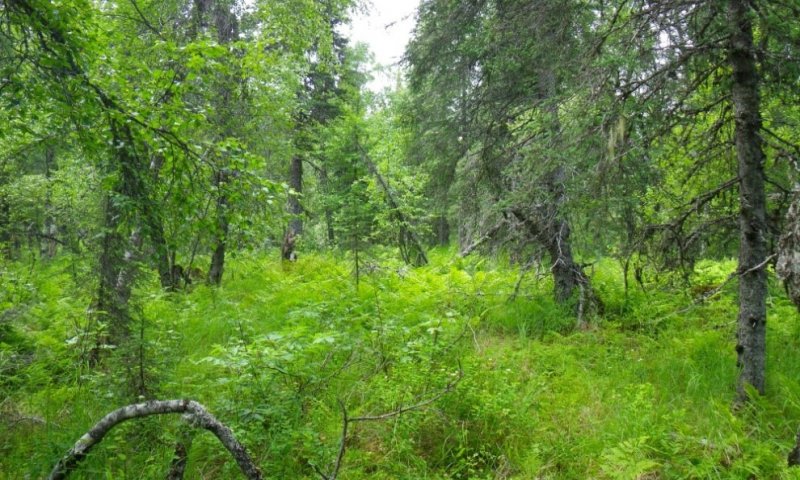
Figure 15. Typical area of community 3.1.
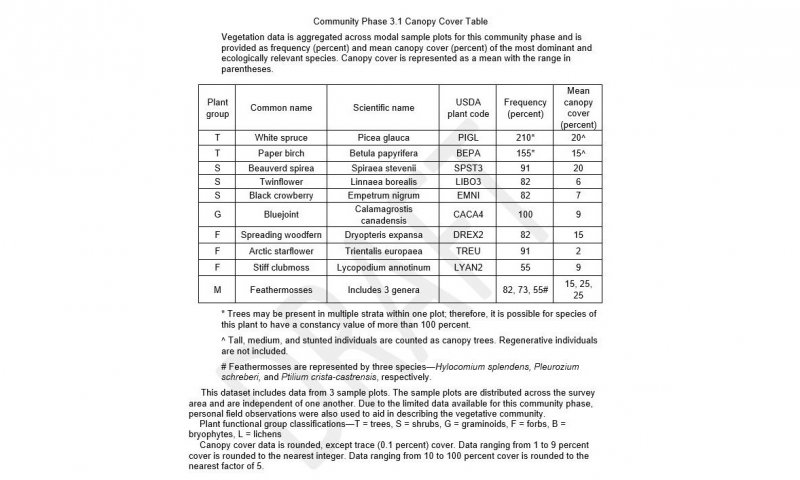
Figure 16. Frequency of species and canopy cover in community 3.1.
The late forestry community phase is characterized as an open mixed forest (Vierek et al., 1992) that has a relatively open understory of shrubs, forbs, and bluejoint. Typically, the overstory consists of white spruce and paper birch and the understory consists of spirea, twinflower, bluejoint, spreading woodfern, and stiff clubmoss (Lycopodium annotinum). Other species include lingonberry (Vaccinium vitis-idaea), black crowberry (Empetrum nigrum), strawberryleaf raspberry, and common ladyfern (Atherium felix-femina). Mosses, including feathermosses and sphagnum mosses (Sphagnum spp.) are widespread in the ground cover, and lichens are a relatively minor component. Other ground cover commonly includes herbaceous and woody litter.
Community 3.2
Bluejoint/fireweed
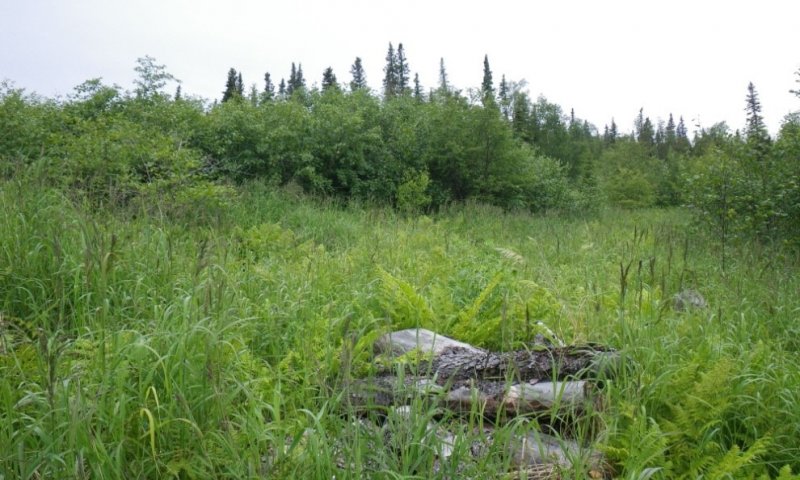
Figure 17. Area manipulated by forestry activity.
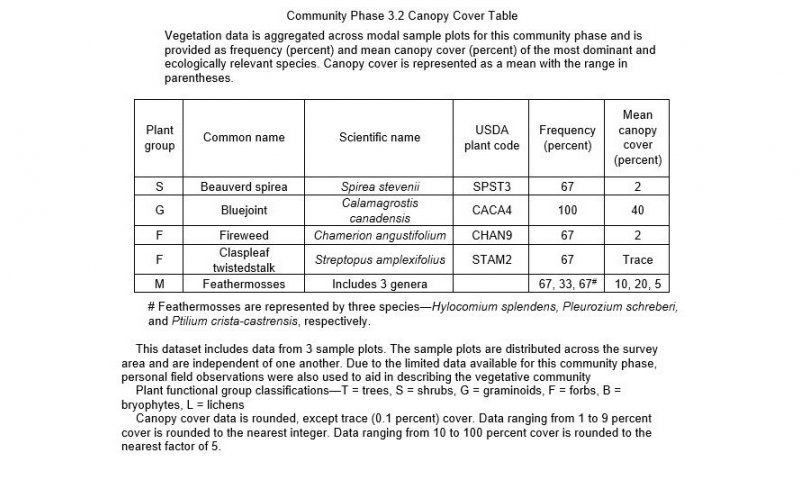
Figure 18. Frequency of species and canopy cover in community 3.2.
The early forestry community phase is characterized as a mesic forb herbaceous meadow consisting of graminoids and forbs (Viereck et al., 1992). Regardless of the harvesting technique used, this community typically consists of bluejoint, spirea, fireweed, and arctic starflower. Myriad other species may be present, including Altai fescue (Festuca altaica), sweet vernalgrass (Anthoxanthum odoratum), spreading woodfern, common ladyfern, and Rocky Mountain goldenrod (Solidago multiradiata). Regenerative, medium, and tall strata of paper birch and white spruce trees may be present. Feathermosses commonly are present. Other ground cover commonly includes herbaceous and woody litter.
Pathway 3.2A
Community 3.2 to 3.1
White spruce-paper birch/spirea/spreading woodfern
Time and growth without forestry activity.
Deciduous and coniferous trees are likely to colonize if this community is undisturbed. The transition to a forested state may be accompanied by a change in the understory plant community. The progression of plants and period needed for this transition likely depend on various factors, including the size of the thinned area, the number of trees left, the frequency of thinning, and the rates of reproduction and growth of trees.
Transition T1A
State 1 to 2
Cultural or agronomic activity can cause a shift to an alternate state. The initial activity creates an early community phase of shrubs and graminoids similar to the early community phase of the reference state. The extent of soil disturbance from clearcutting by heavy machinery is thought to be similar to that from windthrow of trees.
Transition T1B
State 1 to 3
Selective forestry techniques, including thinning and limbing of trees and harvesting of firewood, can create a meadow community. This transition is associated with less disturbance of the soil than is transition T1A. This may partially explain the differences between the early community phases of these two alternate states.
Restoration pathway R2A
State 2 to 1
Continued anthropogenic use of these areas typically prevents the forest from returning to the reference state. Depending on the amount of disturbance, a natural transition from the cultural/agronomic alternate state to the reference state may be possible. The richness and abundance of plant species are similar in the early community phases of both states. If an area is used briefly and the seed bank is not highly disrupted, shade-tolerant species such as white spruce likely will grow. The alternate state may then transition back to the reference state. The period needed depends on various factors, including the level of use and the spread and growth rate of trees.
Restoration pathway R3A
State 3 to 1
Discontinuation of forestry activity would be required for the alternate forestry state to return to the reference state. Forestry community 3.1 and the reference state communities differ mainly in the abundance of species (not richness); therefore, eliminating woodcutting and harvesting activity may allow the species in community 3.1 to spread and grow, possibly transitioning the community back to the reference state. The period needed depends on various factors, such as the level of previous activity and the spread and growth rate of trees.













